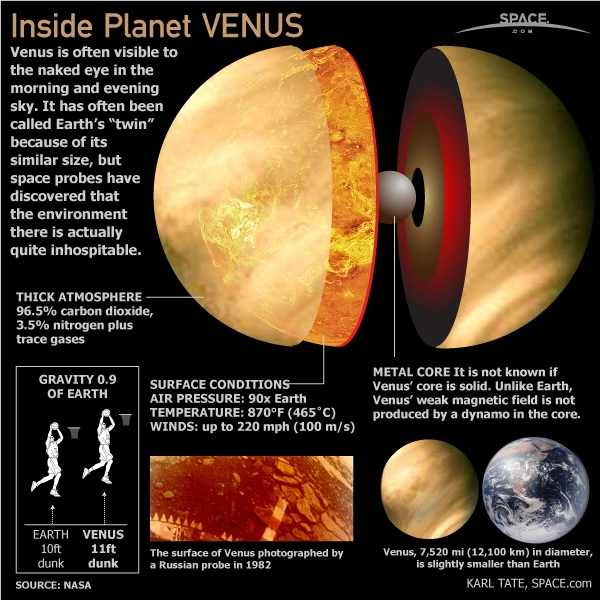India’s Shukrayaan-1 Mission to Explore Venus Unveiled
Why in the news?
India’s upcoming Shukrayaan-1 mission to Venus is generating excitement as it aims to explore the planet’s atmosphere and surface, enhancing understanding of planetary evolution and climate change.
Overview of Shukrayaan-1 Mission:
- Objective: India’s Venus Orbiter Mission, Shukrayaan-1, aims to explore Venus, often referred to as Earth’s “twin.”
- Goals: Uncover the planet’s thick atmosphere, extreme surface conditions, and interaction with solar wind.
Instruments and Technology
- Key Instruments:
- Synthetic Aperture Radar: To map Venus’ surface features.
- Mass Spectrometers: For analysing atmospheric composition.
- Mission Significance: The data collected will enhance understanding of Venus’s environment and its divergence from Earth.
Implications for Science and Exploration:
- Insights into Planetary Evolution: The mission could reveal crucial information about the evolution of planets in our solar system.
- Climate Change Understanding: Findings may also provide parallels to Earth’s climate change.
- India’s Role in Space Exploration: Shukrayaan-1 reinforces India’s expanding influence and capabilities in global space exploration efforts.
About Shukrayaan-1:
- Mission Type: Orbiter mission to study Venus, Earth’s “twin.”
- Scientific Payloads: High-resolution synthetic aperture radar and ground-penetrating radar.
- Launch Vehicle: GSLV Mk II with a launch mass of 2,500 kg.
- Orbit Details: Initial elliptical orbit with 500 km periapsis and 60,000 km apoapsis.
Objectives:
- Surface and Atmosphere Study: Penetrate dense atmosphere to uncover geological secrets.
- Geological Composition Analysis: Provide insights into Venus’s geological history.
- Solar Radiation Interaction: Investigate the relationship between solar radiation and surface particles.
Significance and Challenges:
- Scientific Importance: First mission to study Venus’s sub-surface and atmosphere in-depth.
- Potential for Life: Phosphine detection raises hopes for microbial life.
- Challenges: Extreme temperatures (460°C), crushing pressure, corrosive atmosphere, and communication difficulties hinder surface missions.
Historical Missions to Venus:
- Venera Series (1961-1984): Soviet Union’s pioneering missions with flybys, orbiters, landers, and balloons.
- Pioneer Venus (1978): First U.S. mission with an orbiter and multiprobe, studying atmospheric composition, temperature, and surface features.
Notable Missions:
- Magellan (1989): NASA’s mission that mapped Venus using radar imaging, gathering detailed geological information over four years.
- Akatsuki (2010): JAXA orbiter studying atmospheric circulation patterns with infrared cameras.
Upcoming Missions:
- VERITAS (2026): NASA’s mission to map Venus’s surface and study geology using radar imaging.
- DAVINCI (2026): NASA’s mission focused on analysing Venus’s atmosphere.
- EnVision (2030s): ESA’s orbiter aimed at creating high-resolution surface maps and understanding geology.
Associated Article:
https://universalinstitutions.com/shukrayaan-i-venus-mission/
Sources Referred:
PIB, The Hindu, Indian Express, Hindustan Times




